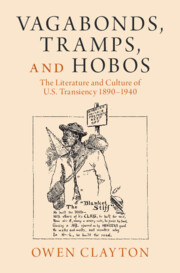Refine search
Actions for selected content:
6 results
Introduction
- from Part I - Context
-
- Book:
- Vagabonds, Tramps, and Hobos
- Published online:
- 27 July 2023
- Print publication:
- 10 August 2023, pp 3-23
-
- Chapter
- Export citation
5 - Between Hobohemia and Academia: Nels Anderson’s Double Voice
- from Part III - The Hobo Transformed
-
- Book:
- Vagabonds, Tramps, and Hobos
- Published online:
- 27 July 2023
- Print publication:
- 10 August 2023, pp 139-166
-
- Chapter
- Export citation
1 - From Tramp to Hobo
- from Part I - Context
-
- Book:
- Vagabonds, Tramps, and Hobos
- Published online:
- 27 July 2023
- Print publication:
- 10 August 2023, pp 24-44
-
- Chapter
- Export citation
Conclusion: The End of the Road? Transiency beyond the Hobo
-
- Book:
- Vagabonds, Tramps, and Hobos
- Published online:
- 27 July 2023
- Print publication:
- 10 August 2023, pp 230-242
-
- Chapter
- Export citation
7 - ‘I’m a Hobo Myself Sometimes’: African-American Transiency in Black Vernacular Music
- from Part III - The Hobo Transformed
-
- Book:
- Vagabonds, Tramps, and Hobos
- Published online:
- 27 July 2023
- Print publication:
- 10 August 2023, pp 200-229
-
- Chapter
- Export citation

Vagabonds, Tramps, and Hobos
- The Literature and Culture of U.S. Transiency 1890–1940
-
- Published online:
- 27 July 2023
- Print publication:
- 10 August 2023
